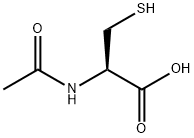ACSreagent,≥98.0% , 108-24-7
Synonym(s):
Acetic Anhydride;Acetyl acetate, Acetyl oxide;Acetyl Oxide,Ethanoic Anhydride, Acetic Acid
CAS NO.:108-24-7
Empirical Formula: C4 H6 O3
Molecular Weight: 102.09
MDL number: MFCD00008705
EINECS: 203-564-8
PRODUCT Properties
| Melting point: | -73.1 °C |
| Boiling point: | 140 °C |
| Density | 1.087 |
| vapor density | 3.5 (vs air) |
| vapor pressure | 10 mm Hg ( 36 °C) |
| refractive index | n |
| Flash point: | 130 °F |
| storage temp. | Store at RT. |
| solubility | Miscible with ether, chloroform and benzene. |
| form | Liquid |
| color | Colorless |
| Specific Gravity | 1.082 |
| PH | 3 (10g/l, H2O, 20°C) |
| Odor | Very strong; pungent; vinegar-like characteristic odor. |
| Odor Type | acidic |
| explosive limit | 2.0-10.2%(V) |
| Water Solubility | REACTS |
| Sensitive | Moisture Sensitive |
| Merck | 14,56 |
| BRN | 385737 |
| Exposure limits | NIOSH REL: ceiling 5 ppm (20 mg/m3), IDLH 200 ppm; OSHA PEL: 5 ppm;
ACGIH TLV: ceiling 5 ppm. |
| Dielectric constant | 20.0 |
| Stability: | Stability Flammable. Incompatible with strong oxidizing agents, water, strong bases, alcohols. |
| LogP | -0.58 at 20℃ |
| Surface tension | 32.65mN/m at 293.15K |
| CAS DataBase Reference | 108-24-7(CAS DataBase Reference) |
| NIST Chemistry Reference | Acetic acid anhydride(108-24-7) |
| EPA Substance Registry System | Acetic anhydride (108-24-7) |
Description and Uses
Acetic anhydride (chemical formula: (CH3CO)2O) is the simplest isolable anhydride of a carboxylic acid, is widely used as a reagent in organic synthesis. It has an internal asymmetric structure, leading to its potent electrophilicity. In organic chemistry, it is mainly used in acetylation for the manufacture of commercially significant materials, e.g. it can be used for the conversion of cellulose to cellulose acetate and aspirin. It can also be used as a wood preservative. In starch industry, it is a common acetylation compound for acetylation of monoglyceride. It is also an esterification agent for the production of modified starches. It is produced by carbonylation of methyl acetate or the reaction between ketene and acetic acid.
Acetic anhydride is an important solvent and acetylation agent. It is used for the manufacture of acetylcellulose, acetylsalicylic acid, acetanilide, nitrofurane, sulfonamides, vitamin B6 etc. As acetulizer and solvent in examining wool fat, glycerol, fatty and volatile oils, resins; detection of rosin. Widely used in organic syntheses, e.g., as dehydrating agent in nitrations, sulfonations and other reactions where removal of water is necessary.
Safety
| Symbol(GHS) |    GHS02,GHS05,GHS06 |
| Signal word | Danger |
| Hazard statements | H226-H302-H314-H330 |
| Precautionary statements | P210-P280-P301+P312-P303+P361+P353-P304+P340+P310-P305+P351+P338 |
| Hazard Codes | C,Xn,F,Xi |
| Risk Statements | 11-20/21/22-37/38-41-34-20/21-10-20/22-19-40 |
| Safety Statements | 26-39-45-36/37/39-33-16 |
| RIDADR | UN 2924 3/PG 2 |
| OEL | Ceiling: 5 ppm (20 mg/m3) |
| WGK Germany | 3 |
| RTECS | AK1925000 |
| F | 21 |
| Autoignition Temperature | 629 °F |
| TSCA | Yes |
| HazardClass | 8 |
| PackingGroup | II |
| HS Code | 29152400 |
| Hazardous Substances Data | 108-24-7(Hazardous Substances Data) |
| Toxicity | LD50 orally in rats: 1.78 g/kg (Smyth) |
| IDLA | 200 ppm |




